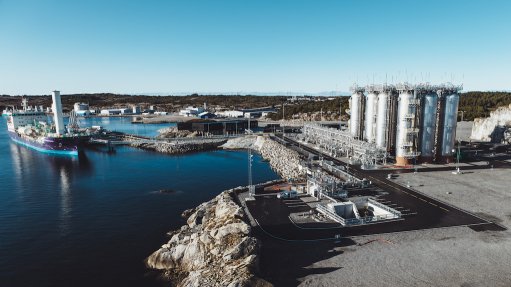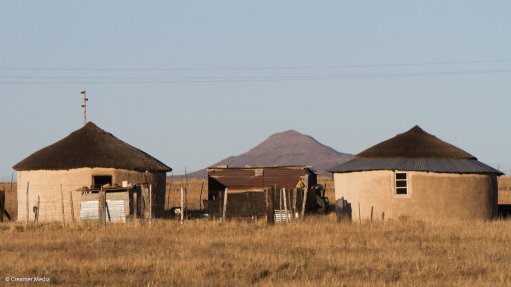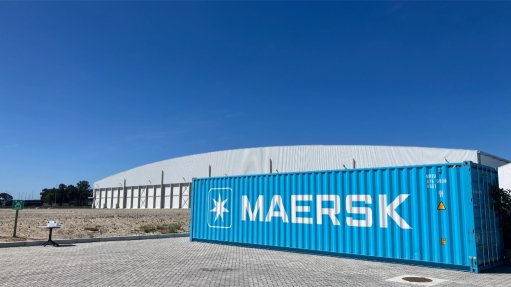The impact of energy prices on food inflation
On the surface, the relation between high electricity and oil prices and food inflation can be perceived as linear rather than dynamic. There is a relation but it is more complicated. Here are few insights that may help us understand the dynamic.
Final food prices are made up of a number of input costs along the chain of supply. Energy prices constitute a share of those costs along the chain, and are a fraction of the total costs. What we know is that food inflation is taking place and some items are well above the consumer price index (CPI).
But what we do not know is where along the chain the price inflation is coming from and whether it can solely be attributed to energy price inflation. Is it at the farm gate or at the tail-end, when the consumer buys a product at a retail store, or in between that food price inflation takes place?
What we are trying to understand is whether it is solely a result of energy costs or something else. Several studies show that the relation is not always conclusive. While energy prices do have an effect, they are not the only cause of food price inflation and the relation is relative to other things, such as the cost of other inputs, the cost of labour, commodity speculation and the level of market competition in the food sector. Further, energy costs are spread throughout the value chain and are derived from different types of energy sources, electricity and diesel being the main sources.
Energy prices have a more pronounced effect at the farm than throughout the whole value chain process. Oil and electricity prices have increased substantially in the last ten years, but we know little of how energy price inflation has affected changes in farming practices and the types of crops that are grown to deal with input price surges. A farmer’s elasticity to absorb extra costs depends on improvements in management practices and the prices his or her produce can fetch in the market.
It is also difficult to compare individual farmers with large agribusinesses. Their cash flow, operating costs and financing costs are different. Farmers also engage in dynamic income diversification strategies to ensure the sustainability of the farm business but in some cases farmers do not have that leeway to adapt easily to sudden price shocks that may linger for a while.
There are also other factors at play outside the control of the farmer. Major staple foods, such as maize, are part of international commodity trade, so their prices are determined by movements in the global market. Commodity prices can exhibit some level of volatility. The price a farmer gets for his or her produce is influenced by the state of the currency at the time of sale and the total yield a farmer can produce in a given year, which is determined by the weather.
However, the demand for specific crops, such as maize and soya, is also affected by other dynamics as far as consumer prices go. The prices of food go up if people’s demand for protein goes up, especially when human consumption competes with animal consumption, if the feed for livestock is maize or soya. Maize, for instance, has also been used for ethanol production and there are good studies to show that the US’s upscaling of maize production for ethanol has had an impact on feed costs.
High electricity prices in the short term can either be transferred directly or delayed because price shocks do not have automatic transferability to buyers and then consumers.
High electricity and even diesel costs can lead to more efficient production through better management of farm production, provided other input costs do not rise unpredictably and unexpectedly. With high prices, three things can happen: full prices are transferred (highly unlikely); farmers simply absorb these costs (highly unlikely); or farmers change production methods and may even switch to higher-value crops or diversify their income sources because full costs cannot be transferred (most likely scenario).
Further, high prices may induce farmers to focus on higher yields – for instance, they may opt for genetically modified crops to boost yields or, as has been mentioned before, switch to higher-value crops. Farmers may also reduce labour and push for more mechanisation (this may be truer for higher-value crops than for lower-value crops).
The effect of great efficiency and higher yields is that energy intensity drops – in other words, less energy is used for far greater output. If the yield is high, with set commodity prices (with a weak or strong rand, it does not matter) being high, we should expect that the gross value of farm output relative to the gross energy costs should be more absorptive, compared with when yields and commodity prices are low.
If the yields are high and commodity prices are low but the rand is weak, there can be some benefit, depending on how much of a slum there is in commodity prices, compared with the percentage weakening of the rand.
There is usually an asymmetry of information between farm production costs, producer/processor costs and retailers’ profit margins. Each, in turn, will be gaming each other and the relative power of each also determines who are the price takers and the price winners.
It is more likely farmers would be subject to buyer power and so will have to absorb higher energy prices more than the rest in the value chain.
So, what can we conclude from this? Energy cost transference is dependent on four things: the relative income growth of consumers, the ability of farmers to absorb dynamic cost changes within the production system quickly and to increase their farm income, competition among suppliers and purchasers in the input and retail sector or the encouragement of competitive imports.
Article Enquiry
Email Article
Save Article
Feedback
To advertise email advertising@creamermedia.co.za or click here
Comments
Press Office
Announcements
What's On
Subscribe to improve your user experience...
Option 1 (equivalent of R125 a month):
Receive a weekly copy of Creamer Media's Engineering News & Mining Weekly magazine
(print copy for those in South Africa and e-magazine for those outside of South Africa)
Receive daily email newsletters
Access to full search results
Access archive of magazine back copies
Access to Projects in Progress
Access to ONE Research Report of your choice in PDF format
Option 2 (equivalent of R375 a month):
All benefits from Option 1
PLUS
Access to Creamer Media's Research Channel Africa for ALL Research Reports, in PDF format, on various industrial and mining sectors
including Electricity; Water; Energy Transition; Hydrogen; Roads, Rail and Ports; Coal; Gold; Platinum; Battery Metals; etc.
Already a subscriber?
Forgotten your password?
Receive weekly copy of Creamer Media's Engineering News & Mining Weekly magazine (print copy for those in South Africa and e-magazine for those outside of South Africa)
➕
Recieve daily email newsletters
➕
Access to full search results
➕
Access archive of magazine back copies
➕
Access to Projects in Progress
➕
Access to ONE Research Report of your choice in PDF format
RESEARCH CHANNEL AFRICA
R4500 (equivalent of R375 a month)
SUBSCRIBEAll benefits from Option 1
➕
Access to Creamer Media's Research Channel Africa for ALL Research Reports on various industrial and mining sectors, in PDF format, including on:
Electricity
➕
Water
➕
Energy Transition
➕
Hydrogen
➕
Roads, Rail and Ports
➕
Coal
➕
Gold
➕
Platinum
➕
Battery Metals
➕
etc.
Receive all benefits from Option 1 or Option 2 delivered to numerous people at your company
➕
Multiple User names and Passwords for simultaneous log-ins
➕
Intranet integration access to all in your organisation


















